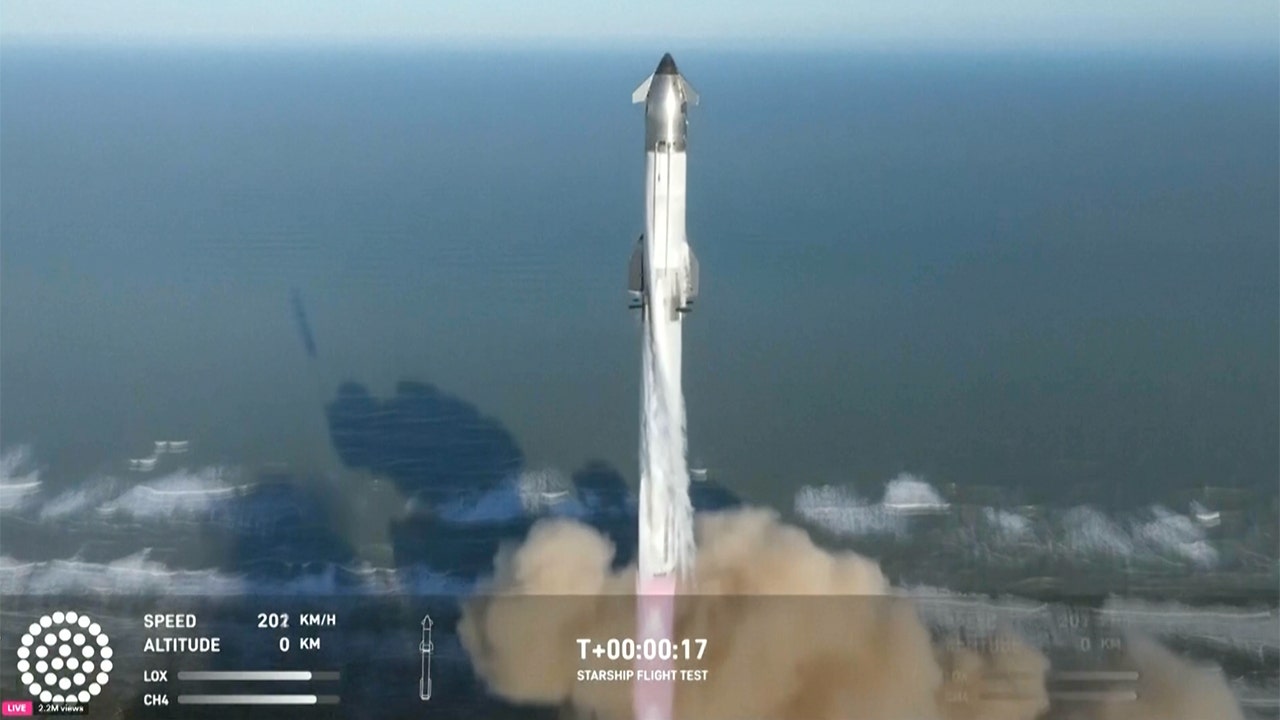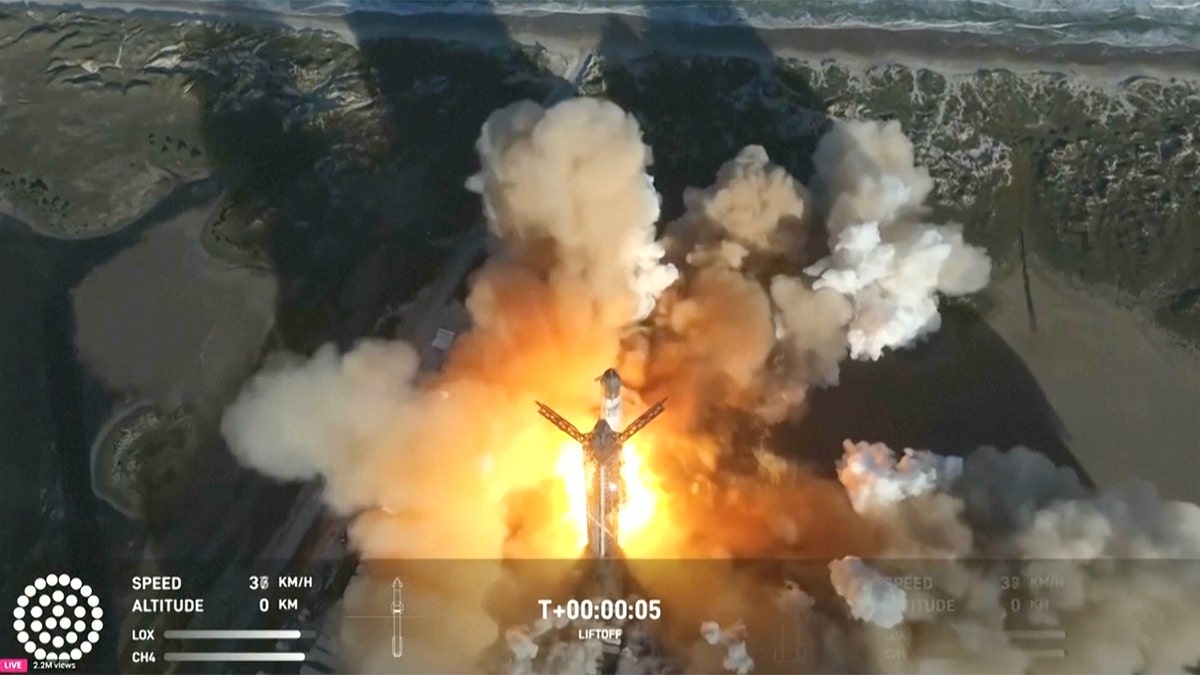Europe has an electric bike problem. Direct-to-consumer e-bikes from inexpensive Chinese brands like Engwe and countless others can be easily purchased online despite openly flouting EU restrictions. They feature throttles and powerful motors that can be easily unlocked to far exceed the 25km/h (16mph) legal speed limit — no pedaling required.
Technology
How to Run Your Own ChatGPT-Like LLM for Free (and in Private)

The power of large language models (LLMs) such as ChatGPT, generally made possible by cloud computing, is obvious, but have you ever thought about running an AI chatbot on your own laptop or desktop? Depending on how modern your system is, you can likely run LLMs on your own hardware. But why would you want to?
Well, maybe you want to fine-tune a tool for your own data. Perhaps you want to keep your AI conversations private and offline. You may just want to see what AI models can do without the companies running cloud servers shutting down any conversation topics they deem unacceptable. With a ChatGPT-like LLM on your own hardware, all of these scenarios are possible.
And hardware is less of a hurdle than you might think. The latest LLMs are optimized to work with Nvidia graphics cards and with Macs using Apple M-series processors—even low-powered Raspberry Pi systems. And as new AI-focused hardware comes to market, like the integrated NPU of Intel’s “Meteor Lake” processors or AMD’s Ryzen AI, locally run chatbots will be more accessible than ever before.
Thanks to platforms like Hugging Face and communities like Reddit’s LocalLlaMA, the software models behind sensational tools like ChatGPT now have open-source equivalents—in fact, more than 200,000 different models are available at this writing. Plus, thanks to tools like Oobabooga’s Text Generation WebUI, you can access them in your browser using clean, simple interfaces similar to ChatGPT, Bing Chat, and Google Bard.
The software models behind sensational tools like ChatGPT now have open-source equivalents—in fact, more than 200,000 different models are available.
So, in short: Locally run AI tools are freely available, and anyone can use them. However, none of them is ready-made for non-technical users, and the category is new enough that you won’t find many easy-to-digest guides or instructions on how to download and run your own LLM. It’s also important to remember that a local LLM won’t be nearly as fast as a cloud-server platform because its resources are limited to your system alone.
Nevertheless, we’re here to help the curious with a step-by-step guide to setting up your own ChatGPT alternative on your own PC. Our guide uses a Windows machine, but the tools listed here are generally available for Mac and Linux systems as well, though some extra steps may be involved when using different operating systems.
Some Warnings About Running LLMs Locally
First, however, a few caveats—scratch that, a lot of caveats. As we said, these models are free, made available by the open-source community. They rely on a lot of other software, which is usually also free and open-source. That means everything is maintained by a hodgepodge of solo programmers and teams of volunteers, along with a few massive companies like Facebook and Microsoft. The point is that you’ll encounter a lot of moving parts, and if this is your first time working with open-source software, don’t expect it to be as simple as downloading an app on your phone. Instead, it’s more like installing a bunch of software before you can even think about downloading the final app you want—which then still may not work. And no matter how thorough and user-friendly we try to make this guide, you may run into obstacles that we can’t address in a single article.
Also, finding answers can be a real pain. The online communities devoted to these topics are usually helpful in solving problems. Often, someone’s solved the problem you’re encountering in a conversation you can find online with a little searching. But where is that conversation? It might be on Reddit, in an FAQ, on a GitHub page, in a user forum on HuggingFace, or somewhere else entirely.
AI is quicksand. Everything moves whip-fast, and the environment undergoes massive shifts on a constant basis.
It’s worth repeating that open-source AI is moving fast. Every day new models are released, and the tools used to interact with them change almost as often, as do the underlying training methods and data, and all the software undergirding that. As a topic to write about or to dive into, AI is quicksand. Everything moves whip-fast, and the environment undergoes massive shifts on a constant basis. So much of the software discussed here may not last long before newer and better LLMs and clients are released.
Bottom line: Proceed at your own risk. There’s no Geek Squad to call for help with open-source software; it’s not all professionally maintained; and you’ll find no handy manual to read or customer service department to turn to—just a bunch of loosely organized online communities.
Finally, once you get it all running, these AI models have varying degrees of polish, but they all carry the same warnings: Don’t trust what they say at face value, because it’s often wrong. Never look to an AI chatbot to help make your health or financial decisions. The same goes for writing your school essays or your website articles. Also, if the AI says something offensive, try not to take it personally. It’s not a person passing judgment or spewing questionable opinions; it’s a statistical word generator made to spit out mostly legible sentences. If any of this sounds too scary or tedious, this may not be a project for you.
Select Your Hardware
Before you begin, you’ll need to know a few things about the machine on which you want to run an LLM. Is it a Windows PC, a Mac, or a Linux box? This guide, again, will focus on Windows, but most of the resources referenced offer additional options and instructions for other operating systems.
You also need to know whether your system has a discrete GPU or relies on its CPU’s integrated graphics. Plenty of open-source LLMs can run solely on your CPU and system memory, but most are made to leverage the processing power of a dedicated graphics chip and its extra video RAM. Gaming laptops, desktops, and workstations are better suited to these applications, since they have the powerful graphics hardware these models often rely on.

Gaming laptops and mobile workstations offer the best hardware for running LLMs at home. (Credit: Molly Flores)
In our case, we’re using a Lenovo Legion Pro 7i Gen 8 gaming notebook, which combines a potent Intel Core i9-13900HX CPU, 32GB of system RAM, and a powerful Nvidia GeForce RTX 4080 mobile GPU with 12GB of dedicated VRAM.
If you’re on a Mac or Linux system, are CPU-dependent, or are using AMD instead of Intel hardware, be aware that while the general steps in this guide are correct, you may need extra steps and additional or different software to install. And the performance you see could be markedly different from what we discuss here.
Set Up Your Environment and Required Dependencies
To start, you must download some necessary software: Microsoft Visual Studio 2019. Any updated version of Visual Studio 2019 will work (though not newer annualized releases), but we recommend getting the latest version directly from Microsoft.

(Credit: Brian Westover/Microsoft)
Personal users will be fine to skip the Enterprise and Professional versions and use just the BuildTools version of the software.

Find the latest version of Visual Studio 2019 and download the BuildTools version (Credit: Brian Westover/Microsoft)
After choosing that, be sure to select “Desktop Development with C++.” This step is essential in order for other pieces of software to work properly.

Be sure to select “Desktop development with C++.” (Credit: Brian Westover/Microsoft)
Begin your download and kick back: Depending on your internet connection, it could take several minutes before the software is ready to launch.

(Credit: Brian Westover/Microsoft)
Download Oobabooga’s Text Generation WebUI Installer
Next, you need to download the Text Generation WebUI tool from Oobabooga. (Yes, it’s a silly name, but the GitHub project makes an easy-to-install and easy-to-use interface for AI stuff, so don’t get hung up on the moniker.)

(Credit: Brian Westover/Oobabooga)
To download the tool, you can either navigate through the GitHub page or go directly to the collection of one-click installers Oobabooga has made available. We’ve installed the Windows version, but this is also where you’ll find installers for Linux and macOS. Download the zip file shown below.

(Credit: Brian Westover/Oobabooga)
Create a new file folder someplace on your PC that you’ll remember and name it AI_Tools or something similar. Do not use any spaces in the folder name, since that will mess up some of the automated download and install processes of the installer.

(Credit: Brian Westover/Microsoft)
Then, extract the contents of the zip file you just downloaded into your new AI_Tools folder.
Run the Text Generation WebUI Installer
Once the zip file has been extracted to your new folder, look through the contents. You should see several files, including one called start_windows.bat. Double-click it to begin installation.
Depending on your system settings, you might get a warning about Windows Defender or another security tool blocking this action, because it’s not from a recognized software vendor. (We haven’t experienced or seen anything reported online to indicate that there’s any problem with these files, but we’ll repeat that you do this at your own risk.) If you wish to proceed, select “More info” to confirm whether you want to run start_windows.bat. Click “Run Anyway” to continue the installation.

(Credit: Brian Westover/Microsoft)
Now, the installer will open up a command prompt (CMD) and begin installing the dozens of software pieces necessary to run the Text Generation WebUI tool. If you’re unfamiliar with the command-line interface, just sit back and watch.

(Credit: Brian Westover/Microsoft)
First, you’ll see a lot of text scroll by, followed by simple progress bars made up of hashtag or pound symbols, and then a text prompt will appear. It will ask you what your GPU is, giving you a chance to indicate whether you’re using Nvidia, AMD, or Apple M series silicon or just a CPU alone. You should already have figured this out before downloading anything. In our case, we select A, because our laptop has an Nvidia GPU.

(Credit: Brian Westover/Microsoft)
Once you’ve answered the question, the installer will handle the rest. You’ll see plenty of text scroll by, followed first by simple text progress bars and then by more graphically pleasing pink and green progress bars as the installer downloads and sets up everything it needs.

(Credit: Brian Westover/Microsoft)
At the end of this process (which may take up to an hour), you’ll be greeted by a warning message surrounded by asterisks. This warning will tell you that you haven’t downloaded any large language model yet. That’s good news! It means that Text Generation WebUI is just about done installing.

(Credit: Brian Westover/Microsoft)
At this point you’ll see some text in green that reads “Info: Loading the extension gallery.” Your installation is complete, but don’t close the command window yet.

(Credit: Brian Westover/Microsoft)
Copy and Paste the Local Address for WebUI
Immediately below the green text, you’ll see another line that says “Running on local URL: http://127.0.01:7860.” Just click that URL text, and it will open your web browser, serving up the Text Generation WebUI—your interface for all things LLM.

(Credit: Brian Westover/Microsoft)
You can save this URL somewhere or bookmark it in your browser. Even though Text Generation WebUI is accessed through your browser, it runs locally, so it’ll work even if your Wi-Fi is turned off. Everything in this web interface is local, and the data generated should be private to you and your machine.

(Credit: Brian Westover/Oobabooga)
Close and Reopen WebUI
Once you’ve successfully accessed the WebUI to confirm it’s installed correctly, go ahead and close both the browser and your command window.
In your AI_Tools folder, open up the same start_windows batch file that we ran to install everything. It will reopen the CMD window but, instead of going through that whole installation process, will load up a small bit of text including the green text from before telling you that the extension gallery is loaded. That means the WebUI is ready to open again in your browser.

(Credit: Brian Westover/Oobabooga)
Use the same local URL you copied or bookmarked earlier, and you’ll be greeted once again by the WebUI interface. This is how you will open the tool in the future, leaving the CMD window open in the background.
Select and Download an LLM
Now that you have the WebUI installed and running, it’s time to find a model to load. As we said, you’ll find thousands of free LLMs you can download and use with WebUI, and the process of installing one is pretty straightforward.
If you want a curated list of the most recommended models, you can check out a community like Reddit’s /r/LocalLlaMA, which includes a community wiki page that lists several dozen models. It also includes information about what different models are built for, as well as data about which models are supported by different hardware. (Some LLMs specialize in coding tasks, while others are built for natural text chat.)
These lists will all end up sending you to Hugging Face, which has become a repository of LLMs and resources. If you came here from Reddit, you were probably directed straight to a model card, which is a dedicated information page about a specific downloadable model. These cards provide general information (like the datasets and training techniques that were used), a list of files to download, and a community page where people can leave feedback as well as request help and bug fixes.
At the top of each model card is a big, bold model name. In our case, we used the the WizardLM 7B Uncensored model made by Eric Hartford. He uses the screen name ehartford, so the model’s listed location is “ehartford/WizardLM-7B-Uncensored,” exactly how it’s listed at the top of the model card.
Next to the title is a little copy icon. Click it, and it will save the properly formatted model name to your clipboard.

(Credit: Brian Westover/Hugging Face)
Back in WebUI, go to the model tab and enter that model name into the field labeled “Download custom model or LoRA.” Paste in the model name, hit Download, and the software will start downloading the necessary files from Hugging Face.

(Credit: Brian Westover/Oobabooga)
If successful, you’ll see an orange progress bar pop up in the WebUI window and several progress bars will appear in the command window you left open in the background.

(Credit: Brian Westover/Oobabooga)

(Credit: Brian Westover/Oobabooga)
Once it’s finished (again, be patient), the WebUI progress bar will disappear and it will simply say “Done!” instead.
Load Your Model and Settings in WebUI
Once you’ve got a model downloaded, you need to load it up in WebUI. To do this, select it from the drop-down menu at the upper left of the model tab. (If you have multiple models downloaded, this is where you choose one to use.)
Before you can use the model, you need to allocate some system or graphics memory (or both) to running it. While you can tweak and fine-tune nearly anything you want in these models, including memory allocation, I’ve found that setting it at roughly two-thirds of both GPU and CPU memory works best. That leaves enough unused memory for your other PC functions while still giving the LLM enough memory to track and hold a longer conversation.

(Credit: Brian Westover/Oobabooga)
Once you’ve allocated memory, hit the Save Settings button to save your choice, and it will default to that memory allocation every time. If you ever want to change it, you can simply reset it and press Save Settings again.
Enjoy Your LLM!
With your model loaded up and ready to go, it’s time to start chatting with your ChatGPT alternative. Navigate within WebUI to the Text Generation tab. Here you’ll see the actual text interface for chatting with the AI. Enter text into the box, hit Enter to send it, and wait for the bot to respond.

(Credit: Brian Westover/Oobabooga)
Here, we’ll say again, is where you’ll experience a little disappointment: Unless you’re using a super-duper workstation with multiple high-end GPUs and massive amounts of memory, your local LLM won’t be anywhere near as quick as ChatGPT or Google Bard. The bot will spit out fragments of words (called tokens) one at a time, with a noticeable delay between each.
However, with a little patience, you can have full conversations with the model you’ve downloaded. You can ask it for information, play chat-based games, even give it one or more personalities. Plus, you can use the LLM with the assurance that your conversations and data are private, which gives peace of mind.
You’ll encounter a ton of content and concepts to explore while starting with local LLMs. As you use WebUI and different models more, you’ll learn more about how they work. If you don’t know your text from your tokens, or your GPTQ from a LoRA, these are ideal places to start immersing yourself in the world of machine learning.
Like What You’re Reading?
Sign up for Tips & Tricks newsletter for expert advice to get the most out of your technology.
This newsletter may contain advertising, deals, or affiliate links. Subscribing to a newsletter indicates your consent to our Terms of Use and Privacy Policy. You may unsubscribe from the newsletters at any time.

Technology
Engwe Mapfour N1 Pro e-bike review: the new ‘premium’

Here in Amsterdam, cheap Super73-knockoffs ridden at almost twice the legal speed have made the city’s renowned bicycle lanes increasingly chaotic and dangerous. Across the Netherlands, over 10,000 of these electric “fat bikes” were seized in 2024.
Engwe’s new Mapfour lineup is the company’s attempt at going legit by expanding from souped-up electric fat bikes and foldables into “premium commuter” e-bikes. And because they’re the first e-bikes that Engwe has designed exclusively for European roads, the company swears they can’t be unlocked for more speed.
I’ve been riding the new Mapfour N1 Pro model for the last few weeks. It lists for €1,899 (almost $2,000), or €1,799 during the initial launch — a price that brings heightened expectations.
The N1 Pro is slathered in premium capabilities like GPS/GSM tracking for which some bike makers charge subscriptions. The monocoque frame and fork are made from carbon fiber supplied by Toray — “the same high-quality carbon fiber as Trek and Specialized,” claims Engwe. There’s even turn-by-turn navigation built into the full-featured app, a large colorful display integrated into the handlebars, and a built-in mechanical lock in the rear wheel hub that automatically engages when the bike is turned off and stationary.
My review bike was missing a fender bolt, occasionally flashed a strange error code, and the solar-powered rear light won’t turn on. Still, it’s likely the highest quality electric bike Engwe has ever made.

$1714
The Good
- Looks and rides sporty
- Long list of features for price
- Removable battery
- Can’t be speed hacked
The Bad
- Strange error messages
- Servicing parts likely an issue
- Doesn’t support height range claimed
- Can’t be speed hacked
I have lots of experience with assembling direct-to-consumer e-bikes and the N1 Pro was ready to ride in about an hour, which is typical. Even with a carbon-fiber frame it weighs 20.1kg (44lbs) fully assembled according to my scale, which is heavy for an e-bike — just not Veloretti-heavy.

In the box you’ll find a basic toolset that includes everything needed for assembly and instructions written in stellar English unlike some previous Engwe tutorials I’ve read. I had to assemble the pedals, front wheel, kickstand, handlebar, and fenders, and fish out a replacement fender bolt from some spare bicycle parts I had lying around. I then went to adjust the saddle to my height only to discover that I was too tall for the N1 Pro.
The saddle stem has a marked safety line that stops well before the height needed for my 6 foot (183cm) frame, despite being sold in the Netherlands where I’m considered a short king. Nevertheless, exceeding the line by about 2.5cm (one inch) hasn’t made the saddle feel insecure, even when riding over rough cobblestones. Engwe claims the N1 Pro supports riders from 165–190cm, and is considering offering the option for a longer saddle stem at checkout based upon my feedback.
The N1 Pro’s geometry puts the rider into what’s essentially a mountain bike stance: a moderate forward lean with hands spread wide out in front of the body. That wrist and body angle combined with a rather stiff saddle are not ideal for riding long distances, especially in combination with a backpack that’ll put even more weight on the hands and derrière. I do like that fun, sporty posture over short distances, but if you’re looking for a more relaxed ride then Engwe has the upright €1,399 MapFour N1 Air available in both step-over and step-through frames.




The 250W mid-drive Ananda motor on the N1 Pro is nearly silent under the din of road noise, and the integrated torque sensor provides an intuitive pedal-assist at all speeds. It produces up to 80Nm of torque that lets me easily start from a dead stop in fourth gear (of seven) on flat roads, but testing on a hill with a gradient of about 15 percent required a start from first gear. Typically, I only needed to shift to a high gear when I wanted to use my leg power to propel the bike at speeds above the 25km/h motor cutoff.
Despite claiming a range of up to 100km from its modest 360Wh battery, my first test performed over a few weeks yielded just 23km off a full charge in near-freezing conditions. I usually rode in power setting three of five on mostly flat roads. The second test performed on a single warmer day improved the range to 27km with 28 percent charge remaining — or an estimated 36km if I had time to run the battery dry for a below average 10Wh consumed per kilometer travelled. The bike battery seems to suffer from idle battery drain of about 1-2 percent per day when parked inside my house.
Worrisome for a “premium” e-bike: on two occasions I saw an “09” error message flash on the display which Engwe is still diagnosing. Once, while starting the bike after it had been sitting outside in the rain for a few hours. Another time after riding home on a rain-soaked street while switching between the N1 Pro’s regular and high-beam lights. In the first case, a simple reboot cleared it and I was able to ride away fine, but the other time required riding home under my own power before it inexplicably cleared the next morning.
- The bike’s integrated display is readable in all lighting, and shows the remaining battery level, speed, power level, and even distance and direction of next turn if using the navigation built into the useful but overwrought Engwe app.
- I didn’t find Engwe’s turn-by-turn navigation very useful as the guidance presented on the display wasn’t informative or urgent enough for me to make confident decisions when traversing the dense network of crossroads in Amsterdam.
- It has a very loud alarm that can ward off thieves and help locate the e-bike in large parking garages.
- The daytime running lights are fun and help with visibility, but also dorky if you choose the animated options.
- The solar-powered rear light never worked on my review unit.
- Engwe provides a chain guard on shipping units.
- The hydraulic disc brakes from an unspecified vendor provide good controlled stops.
- Includes a 1-year warranty on electrical components, chassis, and battery.
1/19
There was a time when premium e-bikes had list prices around €2,000 / $2,000. Those days are as gone as the free venture capital propping up e-bike startups, pushing premium prices up to a starting price closer to €3,000 / $3,000. The Engwe N1 Pro is therefore priced about right. It’s not a bad e-bike, but it’s also not great despite checking off lots of features on a marketing sheet.
Just remember, servicing a direct-to-consumer e-bike can be a problem as it requires the ready availability of spare parts and the knowledge to replace them. As with any electric bike exposed to the elements and regular road use, the N1 Pro’s motor and any proprietary electronics like the controller, display, battery, lights, buttons, and integrated lock will eventually need servicing. So you’d better be on very good terms with your local bike shop or be handy with a wrench and oscilloscope to prevent your mail-order e-bike from quickly turning into e-waste.
Photography by Thomas Ricker / The Verge
Technology
Elon Musk’s SpaceX prepares for 8th Starship launch, pending FAA approval

Elon Musk’s SpaceX is preparing to launch the eighth flight test of Starship from Boca Chica, Texas, which could blast off as soon as this Friday as long as the Federal Aviation Administration (FAA) gives its approval.
“Starship Flight 8 flies Friday,” Musk, the CEO of SpaceX, said in a post on X Sunday.
For the first time, the upcoming flight has a planned payload deployment and multiple experiments on re-entry geared toward returning the upper stage booster to the launch site to be caught.
The launch will also include the return and catch of the Super Heavy booster that will blast the rocket off the launchpad.
STARSHIP UPPER STAGE LOST ON SEVENTH TEST FLIGHT, DEBRIS SEEN SPEWING IN SKY
Starship Flight 7 launches from Starbase, Texas, before its upper stage was lost. (Associated Press)
During the flight test, Starship will deploy four Starlink simulators, which are about the same size as next-generation Starlink satellites, SpaceX said.
The Starlink simulators will be deployed in the same sub orbit as Starship and are expected to burn up upon re-entry.
While Starship is in space, SpaceX also plans to relight a single Raptor engine.
POWERFUL WEBB TELESCOPE SPIES SPECTACULAR STAR BIRTH CLUSTER BEYOND THE MILKY WAY

Starship Flight 7 launches from Starbase, Texas. (Associated Press)
If all goes as planned, the launch window will open at 6:30 p.m. ET.
The launch comes more than a month after SpaceX launched Starship Flight 7 from the Starbase test site in Boca Chica, which resulted in Starship experiencing a “rapid unscheduled disassembly” nearly 12 minutes into the flight.
The Super Heavy booster descended back to Earth, where it maneuvered to the launch and catch tower arms at Starbase, resulting in the second ever successful catch of Super Heavy.
Starship, however, was not as successful.
MERGER OF MASSIVE BLACK HOLES FROM EARLY UNIVERSE UNCOVERED BY WEBB TELESCOPE, SCIENTISTS SAY
“Starship experienced a rapid unscheduled disassembly during its ascent burn,” SpaceX said in a statement Jan. 16. “Teams will continue to review data from today’s flight test to better understand root cause. With a test like this, success comes from what we learn, and today’s flight will help us improve Starship’s reliability.”
SpaceX has investigated what caused Starship to break apart, though the investigation remains open.
For Starship Flight 8 to blast off, the FAA must give its approval, which could come in a few ways.
In 2023, the FAA issued a five-year license to SpaceX for launches from Texas, which is revisited for every launch in case modifications need to be made for things like the trajectory of the rocket. The FAA could grant approval once mission specifics and license modifications are made, the FAA told Fox News Digital.
But also lingering is the open investigation into the Starship Flight 7 mishap. To fly again, the investigation needs to be closed, and the FAA must accept the findings. Specifically, the FAA weighs whether the incident put public safety at risk.
At the time of this writing, the investigation had not been closed, and the FAA had not given approval. Still, it is common for the approval to be issued a day or two before launch, the FAA noted.
SpaceX did not respond to Fox News Digital’s request for comment on the matter.
Fox News Digital’s Louis Casiano contributed to this report.
Technology
Longer-lasting laptops: the modular hardware you can upgrade and repair yourself

The goal, Patel says, is to continuously cycle through all of Framework’s actively supported laptops, updating each of them one at a time before looping back around and starting the process over again. Functionality-breaking problems and security fixes will take precedence, while additional features and user requests will be lower-priority.
-

 Technology1 week ago
Technology1 week agoVision Pro apps: the good, the bad, and the ridiculous
-

 News1 week ago
News1 week agoDominican officials cram thousands of inmates facing no charges into overcrowded prisons
-

 Politics1 week ago
Politics1 week agoTop federal agency exposed for spending billions on migrants in a single year
-

 Culture1 week ago
Culture1 week agoAre NFL players as college coaches here to stay? Why DeSean Jackson, Michael Vick can work
-

 News1 week ago
News1 week agoKamala Harris Has Scrambled the California Governor’s Race Without Entering It
-

 Culture1 week ago
Culture1 week agoBook Review: ‘Theory & Practice,’ by Michelle de Kretser
-

 Technology1 week ago
Technology1 week agoReddit vs. Wall Street: the latest in the GameStop saga
-

 Lifestyle1 week ago
Lifestyle1 week ago‘Modern Love’ Podcast: Why Gossiping Could Help Your Love Life












